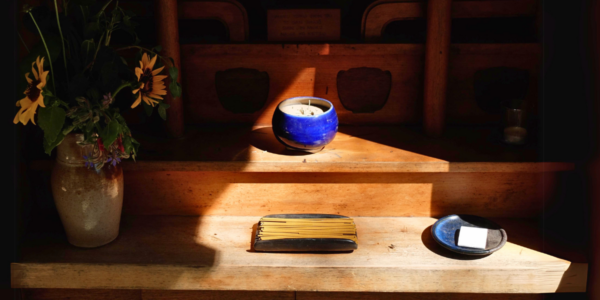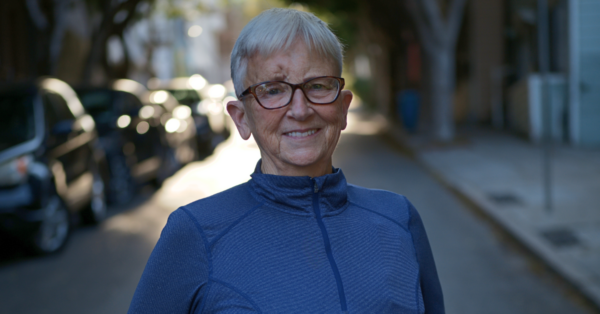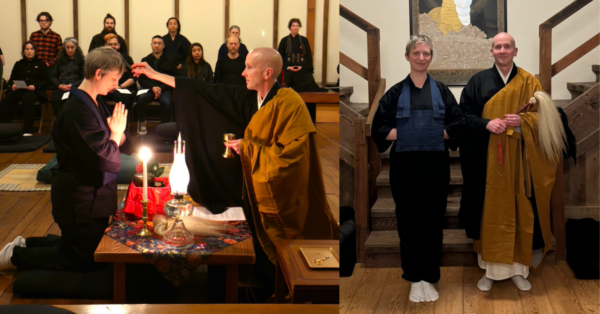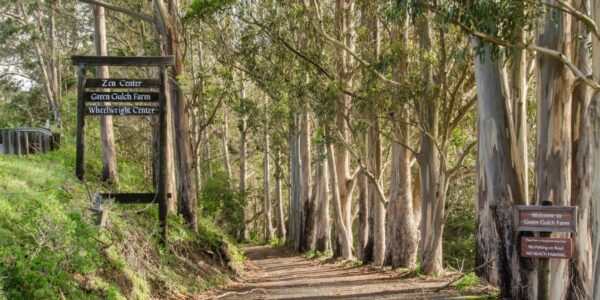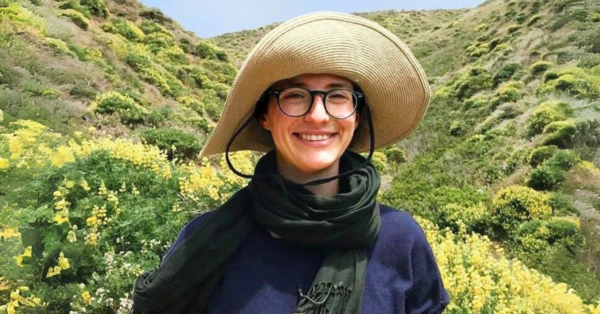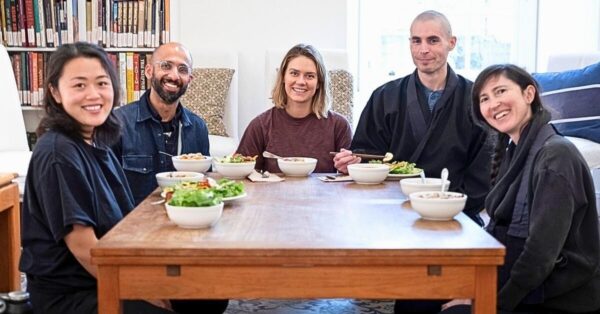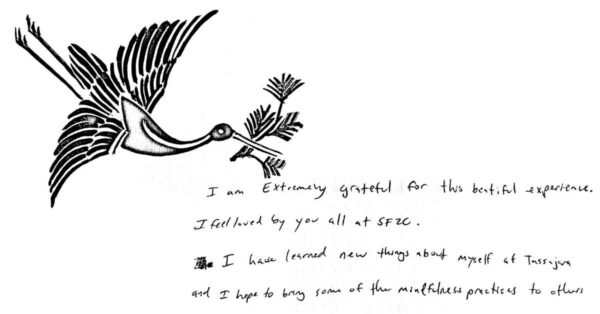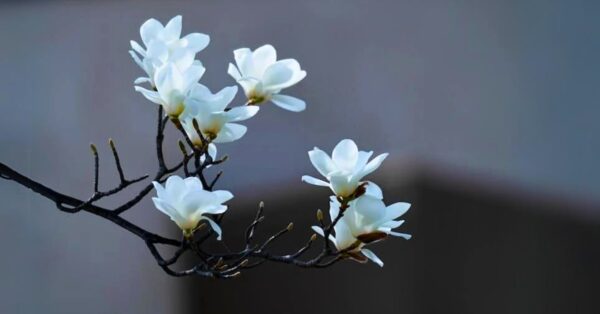by Sachico Ohanks
For many, the path of practice at City Center begins with a Work Practice Apprenticeship. The Zen students who choose this singular course of action come from a wide range of circumstances, backgrounds, and converging life conditions. Each has a “way-seeking” story to tell.
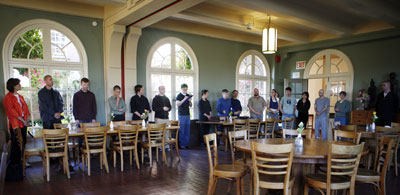 Two Zen practitioners agreed to share with me their experience as Work Practice Apprentices (WPA) at the City Center Temple. The WPA program is a one-year, entry-level Zen training program, which makes it possible for the participants to live, work and practice full-time at the City Center temple, engaging fully in all aspects of daily practice life in a Soto Zen Buddhist temple. Let their stories introduce the WPA program and the life experience that it offers.
Two Zen practitioners agreed to share with me their experience as Work Practice Apprentices (WPA) at the City Center Temple. The WPA program is a one-year, entry-level Zen training program, which makes it possible for the participants to live, work and practice full-time at the City Center temple, engaging fully in all aspects of daily practice life in a Soto Zen Buddhist temple. Let their stories introduce the WPA program and the life experience that it offers.
Goyo Piper arrived at City Center last August, spent four weeks as a guest student, and transitioned to WPA. As part of the WPA program, he has performed a variety of general labor, from working in the kitchen to mopping floors, cleaning bathrooms and moving furniture. He now works as assistant to the tenzo (head of the kitchen practice) half of the time, and works in the shika department maintaining guest facilities for the other half.
SFZC: How did you happen to come to Zen Center?
Goyo: After I finished grad school, I worked in Colorado in the social work field for three and a half years. Eventually I quit my job and moved to Santa Fe to live at Upaya Zen Center. And I loved being there so much, that it made me question —what is this place? I felt I needed to experience another Buddhist community, just to have a frame of reference. I found out about Zen Center from a book called Crooked Cucumber about the life of Suzuki Roshi – really inspiring book. That was probably when the seeds were planted for my coming here.
SFZC: What were some of the qualities that you anticipated finding here?
Goyo: When you go on the website there are 15-20 practice leaders or teachers here; that’s a lot compared to other centers. So I was anticipating a rich and deep practice. And, that I would find a number of people who had made a life choice to do this — not just to dabble, but to live in an intentional community of this sort for a long time. I expected to meet these people here and I have.
SFZC: Does the life you could lead outside of Zen Center’s intentional community have an allure for you?
Goyo: No, it doesn’t. I was raised in an upper middle class family in the suburbs with a lot of comfort. I have had a lot of privilege and opportunities for material possessions. Having experienced that, maybe I don’t desire that life as much anymore.
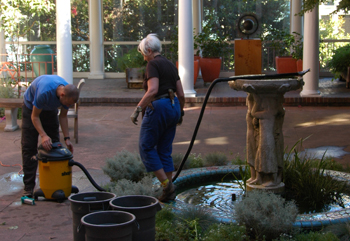 SFZC: Does living this lifestyle satisfy a desire you have?
SFZC: Does living this lifestyle satisfy a desire you have?
Goyo: I think so. I think I have some sort of longing or desire for spiritual expression. The words are so hard to come up with. It’s really special to me to live in a community where there is a lot of intention around the dharma. I feel it deeply when I am in service or zazen. Recently, I did the nightwatch, which is a task that residents perform to secure the building each night, after which you actually sleep near the front door of the temple, either in the Art Lounge or the Buddha Hall. That night I looked up and saw the statue of the Buddha in the middle of the Buddha Hall, and I just couldn’t believe it. I feel really blessed that I have this opportunity to live in this sort of place.
SFZC: Were there any surprises for you when you arrived?
Goyo: Before I came here I heard people refer to this organization, San Francisco Zen Center, as the Vatican of the Zen world in the west. I believe they meant it in a positive way, implying that the organization is so robust. For example, priests leave here and go on to start other sanghas. It’s very much a center.
Another surprise is that the zazen schedule is not as rigorously enforced as what I experienced at Upaya. How we practice is really up to us. It’s always up to us, but here it feels like people take on more of the responsibility for engaging. At Upaya it wasn’t like that; you were expected to sit even if you were not feeling so hot. So, it is much looser here.
SFZC: So it is looser in the day-to-day schedule, and yet you find that people have a deep commitment.
Goyo: Yes, I feel when we are in the zendo or in the Buddha Hall for service that people are deeply committed to their practice. During sesshin or one-day sits the residents are really into it – they are following the rules and they show a deep engagement. During service it seems to me that people participate with a great amount of sincerity. I would equate sincerity with richness and deeper practice.
On a day-to-day basis, I am around people who have been deeply committed for years and years. I knew I would encounter these people but to actually be around them is a whole other dynamic.
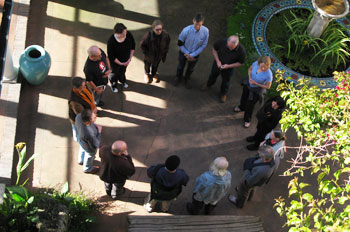 I was just talking to someone who is going to Tassajara for an extended stay that is completely open-ended. This will be her second stay, and the last one lasted three years. Living in a monastic community in the remote California wilderness is a radically different way to live compared to the way most people live in this country. And yet, she spoke about her experience with a lightness that is not casual or careless, but free of ego. Just to be around people who really appreciate this practice and this sort of monastic lifestyle is unusual to find.
I was just talking to someone who is going to Tassajara for an extended stay that is completely open-ended. This will be her second stay, and the last one lasted three years. Living in a monastic community in the remote California wilderness is a radically different way to live compared to the way most people live in this country. And yet, she spoke about her experience with a lightness that is not casual or careless, but free of ego. Just to be around people who really appreciate this practice and this sort of monastic lifestyle is unusual to find.
SFZC: Is being here part of a larger path in life?
Goyo: I think anything I would do is part of a path in life. I am interested in becoming a chaplain, after shadowing chaplains during an internship I completed for my graduate degree. I could see this experience leading directly into preparing to be a chaplain. I don’t really know, but being here is definitely part of my path, wherever it leads.
SFZC: Do you consider living at City Center to be a radical lifestyle?
Goyo: It’s more of a bridge. I have heard people say that Green Gulch is the middle way of the three places, and Tassajara is on one end and City Center is on the other. I think that within our individualist culture, living in community is a radically different way to live. I think we will see more people living in communities like this. I think people want to feel connected.
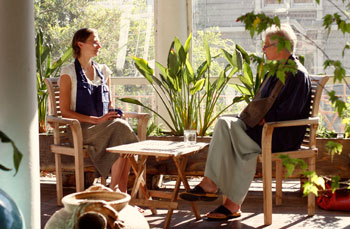 Chris Steele has been at City Center for over a year and a half, arriving here after spending five months at Green Gulch Farm. Since completing his WPA, he joined the staff as shika’s assistant, and recently acquired the new role of jisha for the City Center Abbess Christina Lehnherr, assisting her with dokosan and ceremonies.
Chris Steele has been at City Center for over a year and a half, arriving here after spending five months at Green Gulch Farm. Since completing his WPA, he joined the staff as shika’s assistant, and recently acquired the new role of jisha for the City Center Abbess Christina Lehnherr, assisting her with dokosan and ceremonies.
SFZC: What brought you to Zen Center?
Chris: I left Minneapolis. I quit a job that I was tired of and rode my bike here to California. I didn’t come here to live in monasteries, but it was in the back of my mind. I had been practicing zazen in Minneapolis for ten years before coming, so I had kind of some understanding of monastic life. For those ten years that I was practicing, my job was part of that as well. I was a city bus driver, and it takes a fair bit of concentration and awareness to do that job and not hurt anyone. And, there is a lot of interface with people. That’s what I am talking about when I say my work had some of the elements of my practice.
I was actually in a few places before I got here to Green Gulch. I was in a monastery in Southern California, Yokoji is the name of the place. Which was a myazumi roshi; it was once a part of LA Zen Center. I also visited Shasta Abbey and spent two weeks there. So by the time I got here I had already done a little experimenting.
If I am being honest, Green Gulch was harder for me to be at than City Center, and at the other places there were a few things that hadn’t been quite right. So, by the time I got to City Center, I had already experienced quite a bit of a trial and error. The story felt a little bit like Goldilocks, is how I would describe it to people. City Center held me a little nicer than some of those other places.
twice a day.”
SFZC: What worked for you at City Center?
Chris: Maybe because of my age and experience, I felt a little more comfortable. The container held me a little softer than those other places, perhaps better suited my needs. I feel there is a little more openness here. Also, it’s just a practical matter. I don’t have a car. If I need something I can walk over and get it, which wasn’t the case at Green Gulch, where it was kind of a big deal each week to get to town and to take care of some of the things I needed to.
SFZC: So you have been leaning towards getting here for some time?
Chris: Yes, you might even say, for as old as I am, for 49 years. And, maybe before that, who knows. (laughter)
SFZC: What does living in the monastery give you?
Chris: There is a support at City Center, in that there are other people sitting around you and they expect you to follow the schedule. I found that when I was in Minneapolis, my job conflicted quite often with my sitting schedule. You are doing it alone, so there are little walls to jump. Now I am sitting every day. And really, if I have to nail down what I know – because I know less than I ever did (laughter) – maybe all I really know is that it is a good idea for me to sit zazen twice a day.
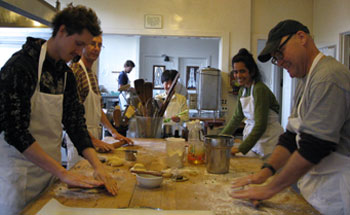 SFZC: Do you feel you are on a path?
SFZC: Do you feel you are on a path?
Chris: I don’t know what the path is. I am asking myself that question. I don’t really know what the answers are. I am rolling a few of those questions around. I don’t know what will happen in a year, and I don’t really have many good ideas about it.
SFZC: And yet, you seem comfortable with where you are now.
Chris: Yes, because I have operated in this fashion for some time, and I am not worried about those types of questions. Maybe I will find one day that was a mistake. But, that is part of looking at what am I doing.
SFZC: Outside of the center, do you keep up with friends and family?
Chris: No, I am bad at that (laughter) if it is right in front of me. I have a couple of good friends in Minneapolis, and I have family members, of course. I could be better at that, but I give myself a little space around that. I put a little of that back on them.
SFZC: Have you had an awakening experience while in the program?
Chris: There might be (laughter) but I think it is important to not get hooked by those, because it’s hard to know what those really are and what the significance behind them is. I feel like there might be a shift in the quality of my zazen a little, whereas for a long time it felt like maybe it was on a plateau or a very slightly inclined plateau. I don’t know if it is important to keep measurements like that. In fact, it might be important not to. I think of the old metaphor: Zazen is like standing in the mist, and you stand in the mist, and at some point you realize you are all wet.
For more information please visit the City Center Work Practice Apprenticeship (WPA) Program page.



